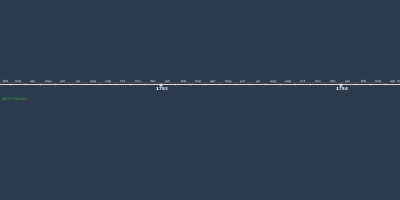Liberty Bond Issues (24 abr 1917 año – 28 sept 1918 año)
Descripción:
A Liberty bond (or liberty loan) was a war bond that was sold in the United States to support the Allied cause in World War I. Subscribing to the bonds became a symbol of patriotic duty in the United States and introduced the idea of financial securities to many citizens for the first time. The Act of Congress which authorized the Liberty Bonds continues to be used as the authority under which all U.S. Treasury bonds are issued.The response to the first Liberty Bond was unenthusiastic and although the $2 billion issue reportedly sold out, it probably had to be done below par because the notes traded consistently below par.[2] One reaction to this was to attack bond traders as "unpatriotic" if they sold below par. Various explanations were offered for the weakness of the bonds ranging from German sabotage to the rich not buying the bonds because it would give an appearance of tax dodging (the bonds were exempt from some taxes).
A common consensus was that more needed to be done to sell the bonds to small investors and the common man, rather than large concerns. The poor reception of the first issue resulted in a convertible re-issue five months later at the higher interest rate of 4% and with more favorable tax terms. Even so, when the new issue arrived it also sold below par. This weakness continued with subsequent issues, the 4.25% bond priced as low as 94 cents upon arrival.
Secretary of the Treasury William Gibbs McAdoo reacted to the sales problems by creating an aggressive campaign to popularize the bonds. The government used a division of the Committee on Public Information called the Four Minute Men to help sell Liberty Bonds and Thrift Stamps. Famous artists helped to make posters and movie stars hosted bond rallies. Al Jolson, Elsie Janis, Mary Pickford, Douglas Fairbanks and Charlie Chaplin were among the celebrities that made public appearances promoting the idea that purchasing a liberty bond was "the patriotic thing to do" during the era. The Boy Scouts and Girl Scouts sold the bonds, using the slogan "Every Scout to Save a Soldier". In 1917 the Aviation Section of the U.S. Army Signal Corps established an elite group of Army pilots assigned to the Liberty Bond campaign. Pilots would crisscross the country in their Curtiss JN-4 "Jenny" training aircraft and would perform acrobatic stunts, and put on mock dog fights for the populace when they arrived over a town. By the time they shut down their engines, most of the townspeople, attracted by their performance, would have gathered. At that point, most people had never seen an airplane, nor ridden in one. Routinely each pilot stood in the rear cockpit of his craft and told the assemblage that every person who purchased a Liberty Bond would be taken for a ride in one of the airplanes. The program was successful in raising a substantial amount of money which was used to pay for the war effort. Through the selling of "Liberty bonds," the government raised around $17 billion for the war effort. Considering that there were approximately 100 million Americans during that time, each American, on average, raised $170 on Liberty bonds.
There were four issues of Liberty Bonds:
1. Apr 24, 1917 Emergency Loan Act authorizes the issue of $1.9 billion in bonds at 3.5 percent.
2. Oct 1, 1917, Second Liberty Loan offers $3.8 billion in bonds at 4 percent
3. Apr 5, 1918, Third Liberty Loan offers $4.1 billion in bonds at 4.15 percent.
4. Sep 28, 1918, Fourth Liberty Loan offers $6.9 billion in bonds at 4.25 percent.
Interest on up to $30,000 in the bonds was tax-exempt only for the First Liberty Bond.
A fifth bond issue relating to World War I was released on April 21, 1919. Consisting of $4.5 billion of gold notes at 4.75% interest, they matured after four years but could be redeemed by the government after three. Exempt from all income taxes, they were called at the time "the last of the series of five Liberty Loans." However they were also called the "Victory Liberty Loan," and appear this way on posters of the period.
Añadido al timeline:
fecha:
24 abr 1917 año
28 sept 1918 año
~ 1 years and 5 months
